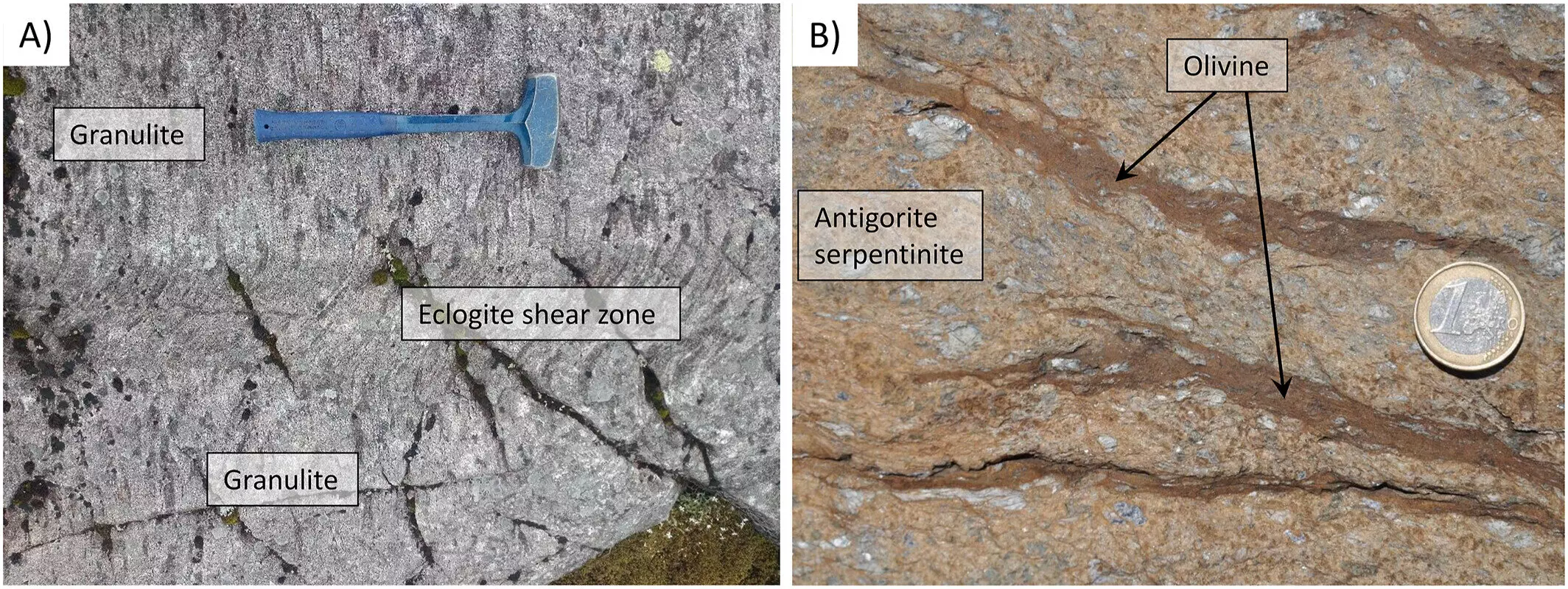Water plays a critical role in geological processes at depths within the Earth’s crust. The behavior of rocks under extreme conditions—including those deep within the crust—reveals significant interactions with water. This interaction influences not only the stability of these rocks but also the occurrence of natural phenomena such as earthquakes and tectonic plate movements. As water permeates through rocks, it fundamentally alters their characteristics, making it essential to understand the underlying mechanisms governing these processes.
Recent studies led by Schmalholz and colleagues have shed light on an intriguing question: how does water migrate through seemingly impermeable rocks such as those found in the deep lithosphere and lower crust? The researchers propose that specific chemical reactions within these rocks can temporarily increase their porosity, thereby allowing water to pass through. Utilizing advanced mathematical modeling, the team examined the dynamics of hydration and dehydration in rocks subjected to high pressures, developing equations that clarify how these processes affect rock porosity over time.
At elevated temperatures found deep within the Earth, mineral interactions can lead to the formation of new, denser minerals. This process effectively squeezes out water, resulting in the development of less dense, more porous rocks—a phenomenon referred to as the dehydration front. Conversely, hydration reactions facilitate the influx of water into the rocks, leading to a hydration front that enhances their density as these rocks absorb water like sponges. This duality of behavior highlights the complex responses of rocks to hydrous conditions, underscoring the intricate balance between hydration and dehydration processes.
The research identified various scenarios where porosity is temporarily enabled—specifically, one scenario for hydration and two distinct scenarios for dehydration. In these models, water flow patterns are critical: hydration reactions see water entering the rock from external sources, while dehydration can result in both water loss and simultaneous water influx, depending on the context. This nuanced understanding of water movement through deep Earth formations is pivotal for explaining geological activity and its broader implications.
Reporting findings in the journal Geochemistry, Geophysics, Geosystems, Schmalholz and his team’s research creates an essential foundation for future investigations into the behavior of water in geological contexts. Understanding how porosity can be generated and modified under high-pressure conditions establishes a framework for examining water’s role in geological processes that drive the Earth’s dynamic systems. These insights hold potential for explaining the mechanisms behind earthquakes and other key geological events, providing crucial evidence that deep Earth processes are far more interactive and variable than previously thought.
Comprehending water dynamics in Earth’s deep structures enhances our understanding of geology as a whole. By revealing how reactions in deep rocks can facilitate or impede water flow, this research opens new avenues for exploring the intricate connections between water and geological processes beneath the Earth’s surface.


Leave a Reply